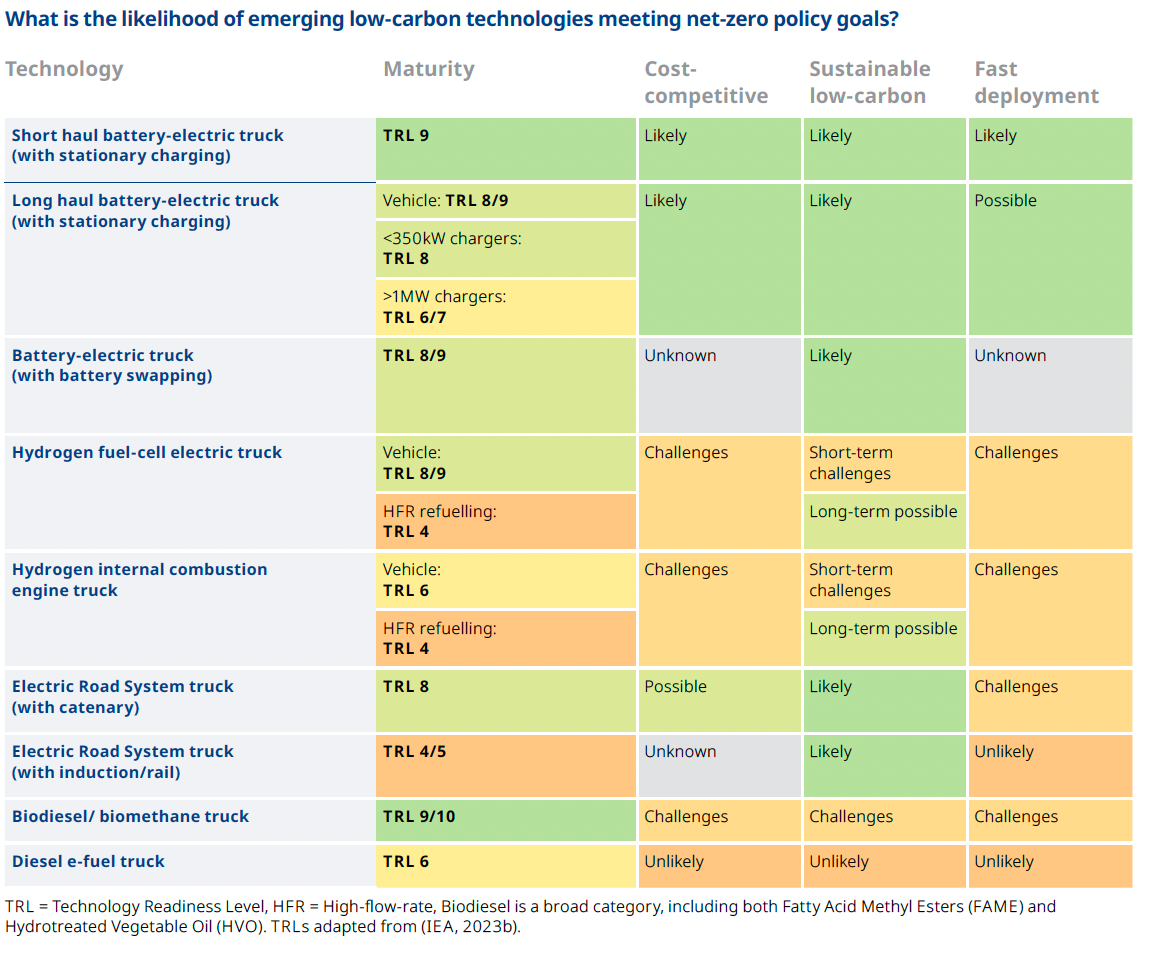Nearly three-quarters of CO2 emissions from freight transport stem from heavy diesel trucks, presenting a significant challenge in transitioning to sustainable fuels for this vehicle category.
A recent report by ITF examines emerging technologies that can potentially reduce emissions from road freight. The report outlines a strategic approach for governments to identify and support technologies deserving of assistance, expediting the crucial shift towards environmentally friendly trucking.

Key Policy Insights
- Prevent Delay Due to Technological Uncertainty: Policymakers should not allow uncertainty about emerging technologies to hinder prompt action. Delaying investment decisions based on technological uncertainties may lead to higher environmental costs than actively supporting technologies with a high likelihood of success.
- Decisive Support for Promising Solutions: Governments should provide support for only a select number of promising solutions to guide the market effectively, preventing fund dilution and maximizing impact.
- Embrace Low-Regret Policy — Battery-Electric Vehicles (BEVs): Supporting battery-electric vehicles is identified as a low-regret policy. This technology exhibits the greatest potential for being both low-carbon and cost-competitive, making it a promising solution for reducing freight emissions.
- Strategic Investment in Charging Infrastructure: While investing in charging infrastructure is crucial, policymakers should approach it carefully and without delay. Deploying depot chargers and proactively strengthening grids ahead of demand are essential steps.
Current policy initiatives
These governments have created policy initiatives promoting low-carbon trucks through financial support and binding regulations for specific technologies and the associated infrastructure.
European Union
The European Union’s Alternative Fuel Infrastructure Regulation (AFIR) (Council of the European Union, 2023) sets mandatory requirements for building electric charging and hydrogen refueling infrastructure along the roads of the Trans-European Transport Network (TEN-T). Other technologies, such as ERS, are not prioritized.
United States
The Inflation Reduction Act (IRA) made funding available for constructing charging points and hydrogen refueling stations in the United States. The IRA also includes tax credits for hydrogen production and funding for grants for BEVs and fuel-cell electric vehicles (FCEVs), as well as a modest budget for advanced biofuels (US Congress, 2022).
The California Air Resources Board’s (CARB) Advanced Clean Trucks regulations promote zero-emission vehicles (BEVs and hydrogen FCEVs) (CARB, 2021).
Other European countries
France (Vinci, 2023), Germany (BMDV, 2020), Sweden (Ullström, 2021), and the United Kingdom (UK DfT, 2021) are considering ERS solutions in addition to BEVs and hydrogen trucks.
Technology Readiness Levels
Battery-electric trucks for goods transport, particularly those with stationary charging, have the highest technology readiness levels and are most likely to be deployed swiftly.

With carbon budgets shrinking rapidly, governments face limited time to choose which technologies to support. Policymakers are urged to base their support on the likelihood of making decisions within an uncertain technological landscape. This strategic approach enables the endorsement of a limited number of promising technologies, instilling confidence and averting accusations of biased selection.
The relative likelihood of BEVs aligning with policy goals will remain stable in the short term. The ongoing acceptance of electric passenger cars and shared infrastructure benefits contribute to the higher market acceptance of battery-electric trucks compared to alternative technologies.
While the scale of investment required for large-scale adoption of battery-electric trucks is substantial, it can be approached incrementally. Initiating short-haul and urban operations, where BEVs have a high likelihood of success, allows for gradually scaling up to more challenging applications like long-haul heavy-goods transport.
The swift deployment of BEVs in short-haul applications is a valuable learning experience to identify technical limitations. This insight aids in determining whether complementary technologies, such as biofuels or hydrogen, are needed for more challenging use cases, understanding their potential role in the broader market.
Source:
ITF (2023), “How Governments can Bring Low-emission Trucks to Our Roads — and Fast”, International Transport Forum Policy Papers, №127, OECD Publishing, Paris,
